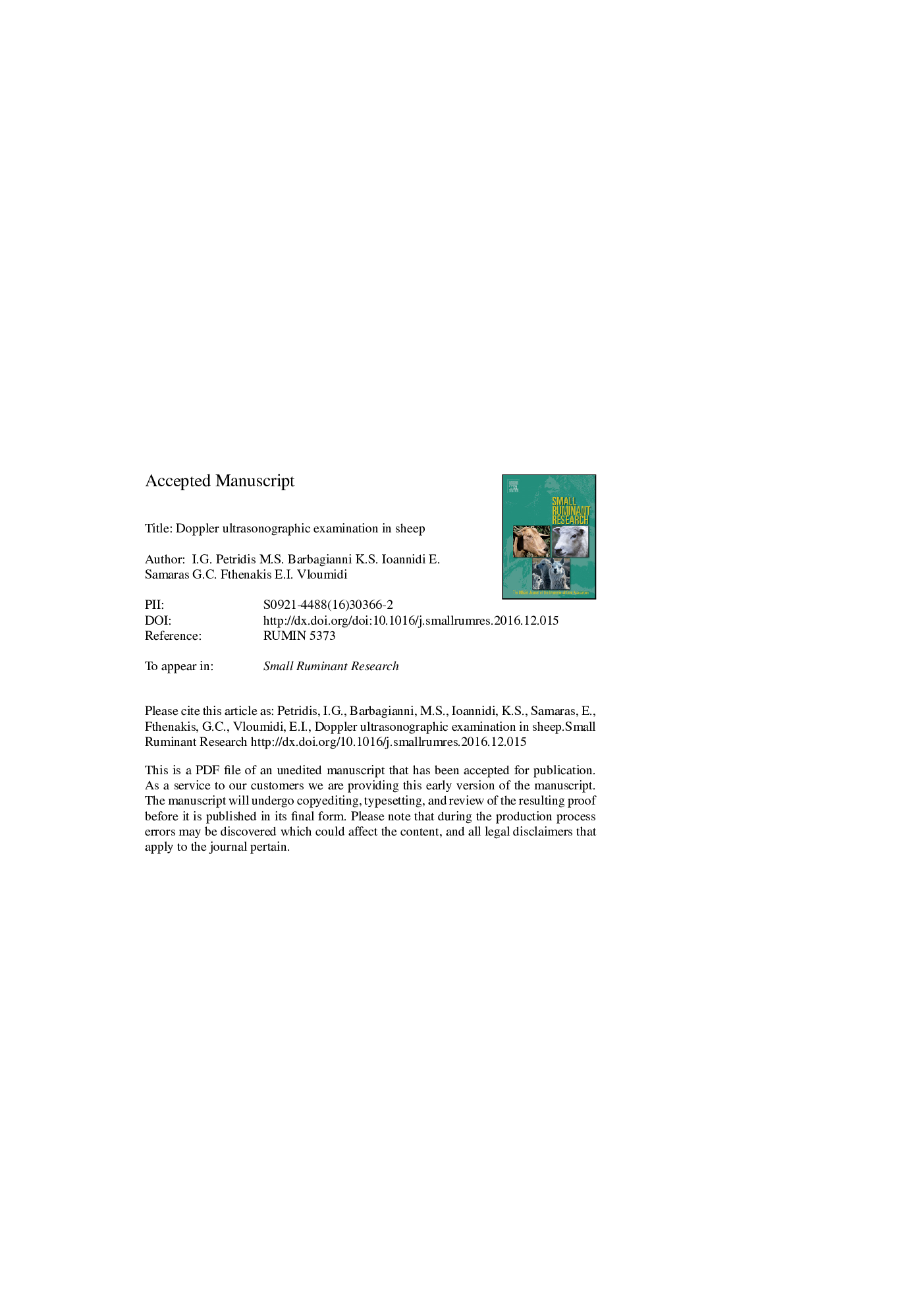| Article ID | Journal | Published Year | Pages | File Type |
|---|---|---|---|---|
| 5544141 | Small Ruminant Research | 2017 | 35 Pages |
Abstract
Objective of the present paper is to review applications of Doppler ultrasonography in sheep. Principles of Doppler ultrasonography and their physiological background are initially presented, as well as haemodynamic parametres that can be used for evaluation of the findings. In sheep, Doppler ultrasonography has been used in clinical work primarily for examination of the reproductive system and of foetuses. It has also been used in studies, where sheep had served as model for studying various conditions in human physiology or medicine, e.g., examination of the heart, which can be performed by conventional Doppler echocardiography or tissue Doppler imaging. Main uses of the modality include evaluation of changes in follicular blood flow in measuring uterine and ovarian blood flow and for determining changes in blood perfusion during various reproductive stages; blood flows in the umbilical artery have also been measured, which can have a clinical application in identifying pregnancies at risk, as well as a model for human medicine. As technology advances, use of Doppler ultrasonography will increase. With more frequent use, new diagnostic and therapeutic approaches will arise, which would be based on estimating functional status (as evidenced by blood perfusion) of the organs examined.
Keywords
Related Topics
Life Sciences
Agricultural and Biological Sciences
Animal Science and Zoology
Authors
I.G. Petridis, M.S. Barbagianni, K.S. Ioannidi, E. Samaras, G.C. Fthenakis, E.I. Vloumidi,
